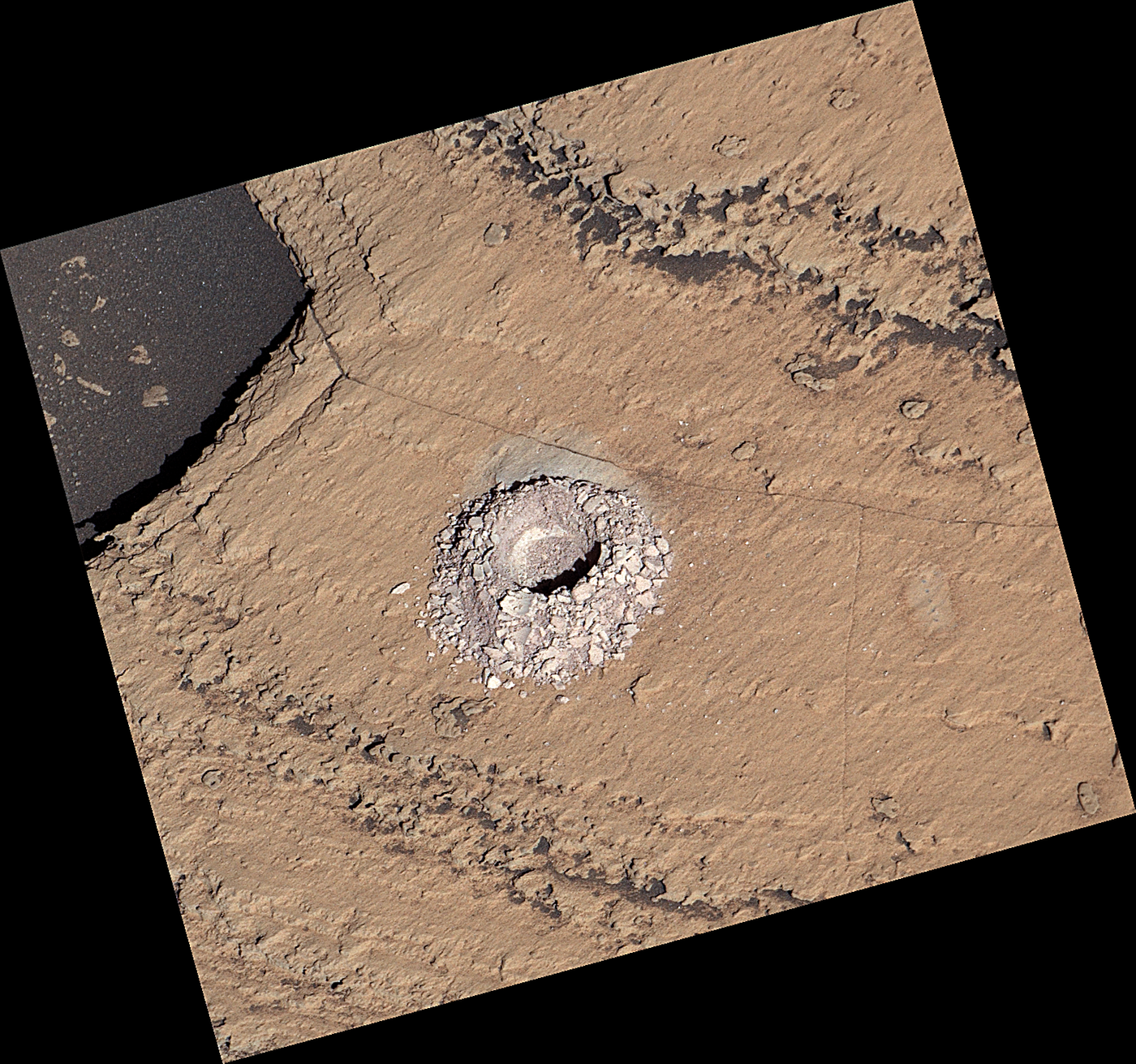A recent study published in the Journal of Geophysical Research: Planets examines the 39th drilling sample collected by NASA’s Curiosity rover on Mars from a rock named “Sequoia”, which comes shortly after the pioneering robot passed its 4,000th sol, or Martian day, exploring the Red Planet. This sample was found to contain starkeyite, which is a magnesium sulfate mineral analogous to extremely dry climates such as Mars and holds the potential to help researchers better understand the climate of the Red Planet, specifically pertaining to how it got so dry.
Image of the drill hole made by NASA’s Curiosity Mars rover collect a sample on Oct. 17, 2023, the 3,980th Martian day, or sol, of the mission. (Credit: NASA/JPL-Caltech/MSSS)
“The types of sulfate and carbonate minerals that Curiosity’s instruments have identified in the last year help us understand what Mars was like so long ago. We’ve been anticipating these results for decades, and now Sequoia will tell us even more,” said Dr. Ashwin Vasavada, who is a project scientist on the Curiosity mission at NASA’s Jet Propulsion Laboratory (NASA JPL) and one of almost three dozen co-authors on the study.
The researchers hypothesize that starkeyite first formed as sulfate minerals as the salty water of the Red Planet slowly evaporated billions of years ago, and as Mars got drier and drier, these sulfates eventually altered into starkeyite. The discovery of starkeyite within drilling samples could provide clues as to how Mars became the cold and dry world we see today, which was much different billions of years ago.
While scientists have yet to find signs of active life on the Red Planet, the goal of the Curiosity rover is to ascertain whether ancient Mars had the conditions to support microbial life. To accomplish this, Curiosity has been slowly climbing Mount Sharp, whose 3 miles (5 kilometers) tall and whose geologic layers offer various snapshots into Mars’ climate history. For now, NASA engineers are sending Curiosity some instructions to follow as Mars is slated to go behind the Sun for a few weeks, and the Sun’s plasma could interfere with radio communications between Earth and the rover.
What new discoveries will researchers make about ancient Mars in the coming years and decades? Only time will tell, and this is why we science!
As always, keep doing science & keep looking up!






